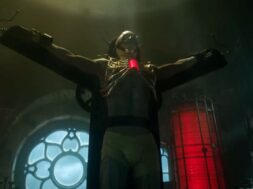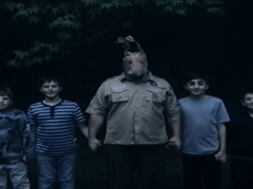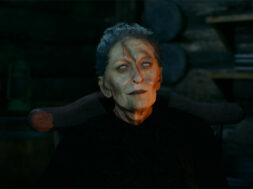In honor of June 26, we would like to recommend the following historically “accurate” films: Son of the Morning Star, Little Big Man, Bury My Heart at Wounded Knee, and American Experience’s Emmy award winning documentary Last Stand at Little Big Horn
Between June 25 and 26, 1876, a combined force of Lakota and Northern Cheyenne led the United States 7th Cavalry into a battle near the Little Bighorn River in what was then the eastern edge of the Montana Territory. The engagement is known by several names: the Battle of Greasy Grass, the Battle of Little Big Horn, and Custer’s Last Stand. Perhaps the most famous action of the Indian Wars, it was a remarkable victory for Sitting Bull and his forces. They defeated a column of seven hundred men led by George Armstrong Custer; five of the Seventh’s companies were annihilated and Custer himself was killed in the engagement along with two of his brothers and a brother-in-law. Known as the battle that left no white survivors, Little Big Horn has inspired more than 1,000 works of art, including over 40 films. Here are four of the best…
Son of the Morning Star
Based on the 1984 best selling historical novel by Evan S, Connell, Son of the Morning Star won five Emmys when it first aired in 1991. Focusing on the life and times of General George Armstrong Custer, it takes up Custer’s life near the end of the American Civil War, follows him through his involvement in famous Indian wars, and culminates with the battle of Little Big Horne. I particularly like this version because it attempts to get beyond the stereotypes and introduce you to the real man; it provides an excellent introduction to the personalities involved and the events leading up to and following the battle.
Little Big Man,
The 1970 film Little Big Man, directed by Arthur Penn and starring Dustin Hoffman, was based on Thomas Berger’s 1964 fictionalized “historical” novel by the same name. Admittedly adjusted history, it tells the satirical, fictional and picaresque story of Jack Crabb; a white boy orphaned in a Pawnee raid and adopted by a Cheyenne warrior, he eventually becomes the only white survivor of the Battle of Little Big Horn. It is considered a “Revisionist Western” because Native Americans receive a sympathetic treatment that was uncommon for Western films in previous decades. Revisionist or not, I simply adore this wickedly humorous film about one man’s life revolving through the kaleidoscope of cultures that made up the American “Wild” West, and I recommend it with all my heart.
Bury My heart at Wounded Knee,
HBO’s 2007 adaptation of Bury My heart at Wounded Knee, a 1970 classic of Native American history by Dee Alexander Brown, recounts the struggle of the Indian Wars from the perspectives of three people: Charles Eastman, a young Sioux doctor who received his medical degree from Boston University in 1889; Sitting Bull, who led the combined forces at Little Big Horn and refused to submit to U.S. government policies that stripped his people of their dignity, identity, and sacred land; and Senator Henry Dawes, one of the men responsible for the government’s Indian affairs policy. The story line begins with the American Indian victory at Little Big Horn in 1876 and continues though to the shameful slaughter of Sioux warriors at Wounded Knee, South Dakota, on December 29, 1890. If the film has any fault, it’s that it attempts to explain the whole deeply complex fourteen-year struggle in just over two hours. It manages to do an excellent job at providing an educational and entertaining overview for future investigation.
The American Experience: Last Stand at Little Big Horn
The American Experience: Last Stand at Little Big Horn takes the time to explore this controversial battle from two perspectives: The Lakota Sioux, Cheyenne, and Crow who had lived on the Great Plains for generations, and the white settlers who were moving west across the continent. Using journals, oral accounts, Indian ledger drawings and archival footage, James Welch and Paul Stekler combined their talents to create one of the most balanced documentaries about this event ever produced. Their efforts won them a much-deserved Emmy.









